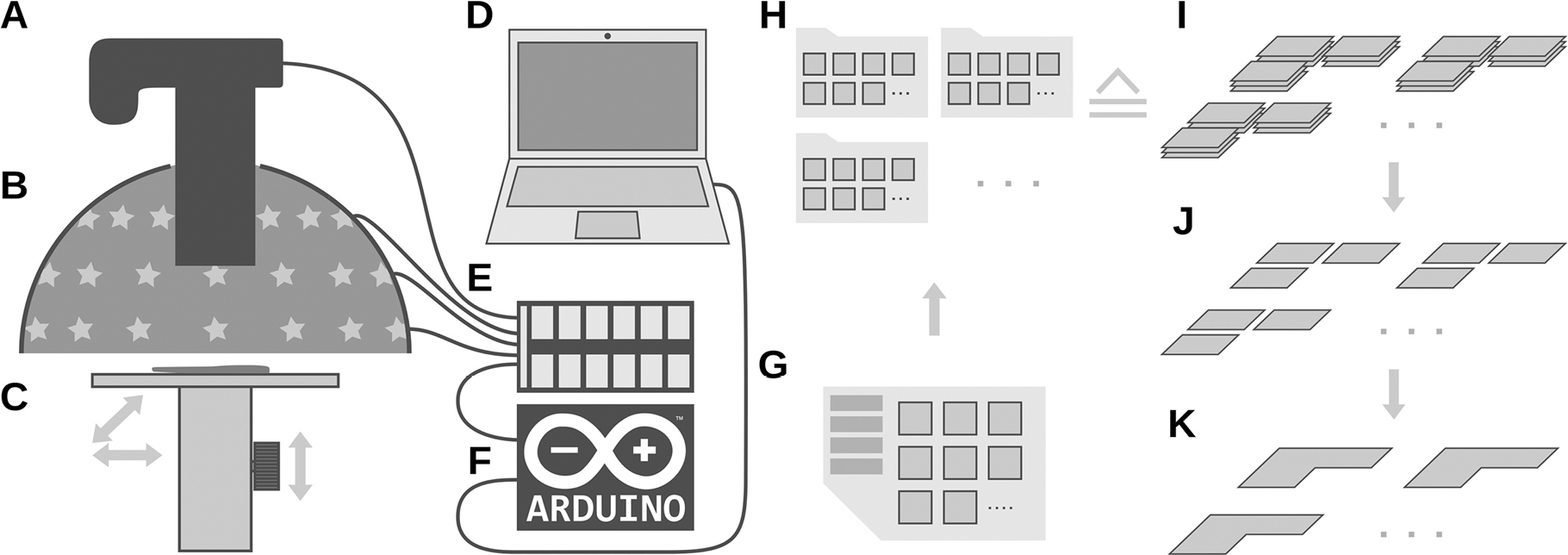
|
||
|
Schematic depiction of the RTI workflow used herein and the included hardware components (A–G). A Digital camera with a macro objective mounted on a vertical macro stand; B Half-spherical dome with power LEDs mounted with the light directed towards the centre of the dome; C XYZ-stage on which the fossil is placed; D Computer with Arduino integrated development environment (used for communication with the microcontroller and to trigger the camera shutter; E Relay board used to open and close specific parts of the circuit that powers the LEDs; F Arduino microcontroller used to control the relay board; G Memory card inserted into the camera used to save images and to transfer them to the computer; H–K Digital workflow used to create in-focus panoramic images; H Sorting the images from the camera into folders that each contain one RTI sequence (in our case 24 images corresponding to 24 illumination angles), in order to be automatically processed by the RTI software (relight); I–K Operations performed on normal maps, produced by the RTI software; I Normal maps with the same field of view but with different focal plane heights form ‘focus stacks’; J In-focus normal maps created by merging the images of each focus stack (extended depth of field); K Panoramic images created by stitching together images of the same objects with different fields of view. These can then be converted from normal maps to height maps. |